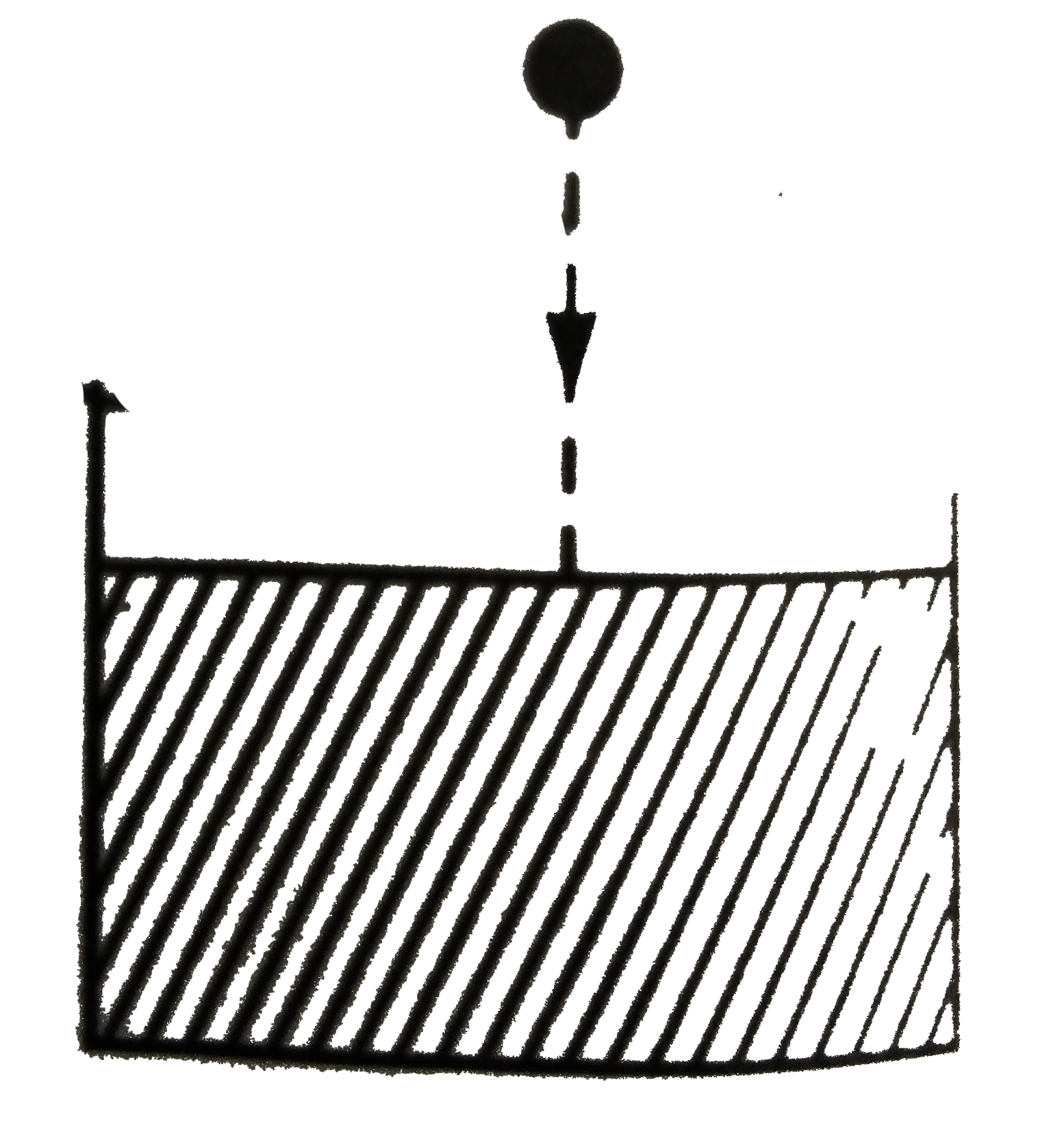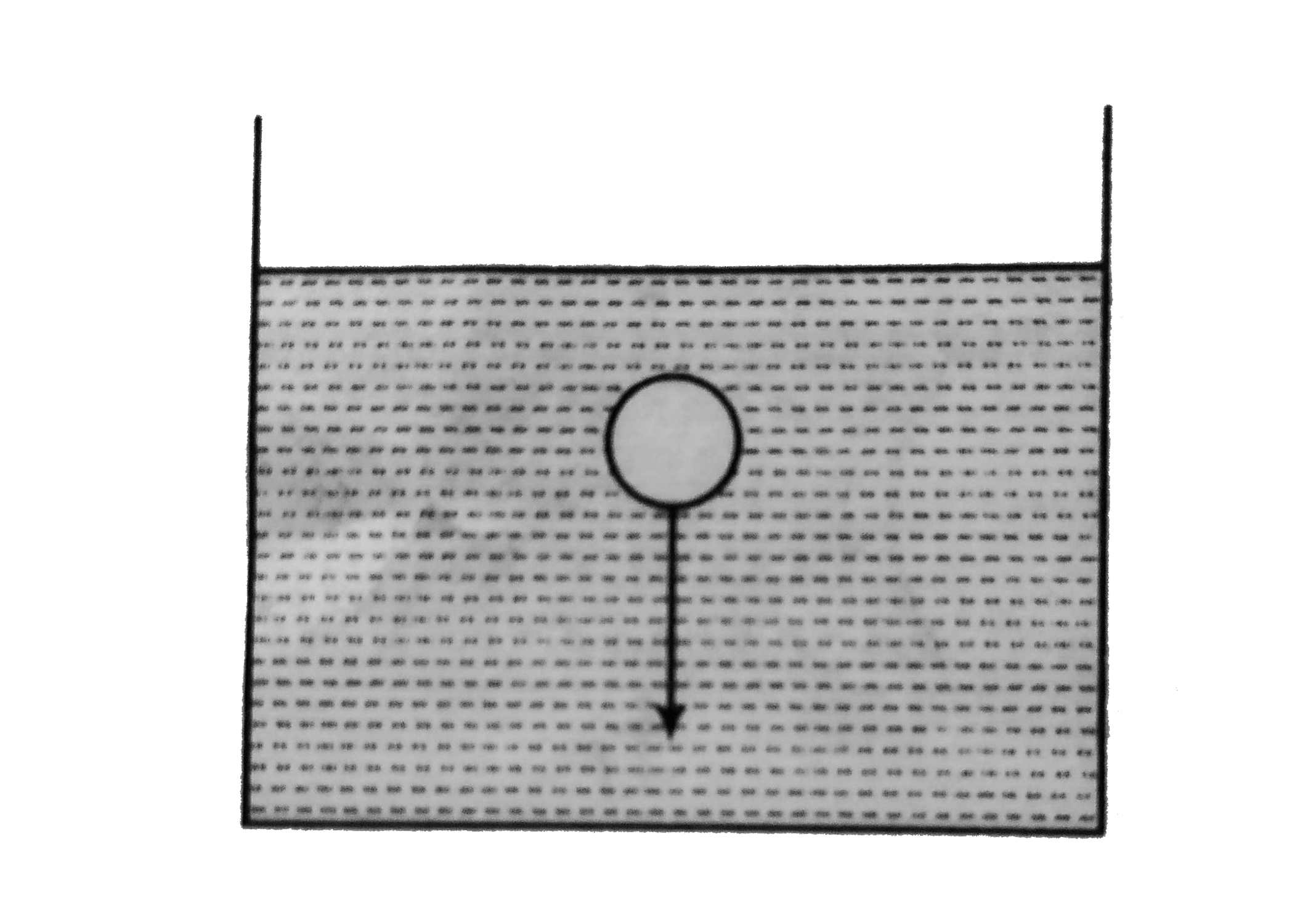A spherical solild of volume V is made of a material of density ρ1. It is falling through a liquid of density ρ2(ρ2<ρ1). Assume that the liquid applies a viscous froce on the ball that is proportional ti the its speed v, i.e., Fviscous=−kv2(k>0). The terminal speed of the ball is
√Vg(ρ1−ρ2)k
Vgρ1k
√Vgρ1k
Vg(ρ1−ρ2)k
The correct Answer is:A
To find the terminal speed of a spherical solid falling through a liquid, we can follow these steps:
Step 1: Identify the forces acting on the sphere
When the sphere is falling through the liquid, there are three main forces acting on it:
1. Weight of the sphere (W): This is the force due to gravity acting downward, given by:
W=ρ1⋅V⋅g
where ρ1 is the density of the sphere, V is its volume, and g is the acceleration due to gravity.
2. Buoyant force (F_b): This is the upward force exerted by the liquid, given by:
Fb=ρ2⋅V⋅g
where ρ2 is the density of the liquid.
3. Viscous force (F_v): This is the force exerted by the liquid on the sphere, which is proportional to the square of its velocity:
Fv=−kv2
where k is a constant and v is the velocity of the sphere.
Step 2: Set up the equation for terminal velocity
At terminal velocity (vt), the net force acting on the sphere is zero. Therefore, the weight of the sphere is balanced by the sum of the buoyant force and the viscous force:
W=Fb+Fv
Substituting the expressions for these forces, we get:
ρ1⋅V⋅g=ρ2⋅V⋅g+kv2t
Step 3: Rearrange the equation
Rearranging the equation gives:
ρ1⋅V⋅g−ρ2⋅V⋅g=kv2t
Factoring out V⋅g from the left side:
(ρ1−ρ2)⋅V⋅g=kv2t
Step 4: Solve for terminal velocity
Now, we can solve for v2t:
v2t=(ρ1−ρ2)⋅V⋅gk
Taking the square root of both sides gives us the terminal velocity:
vt=√(ρ1−ρ2)⋅V⋅gk
Final Answer
The terminal speed of the ball is:
vt=√(ρ1−ρ2)⋅V⋅gk
---
When the sphere is falling through the liquid, there are three main forces acting on it:
1. Weight of the sphere (W): This is the force due to gravity acting downward, given by:
W=ρ1⋅V⋅g
where ρ1 is the density of the sphere, V is its volume, and g is the acceleration due to gravity.
Fb=ρ2⋅V⋅g
where ρ2 is the density of the liquid.
Fv=−kv2
where k is a constant and v is the velocity of the sphere.
At terminal velocity (vt), the net force acting on the sphere is zero. Therefore, the weight of the sphere is balanced by the sum of the buoyant force and the viscous force:
W=Fb+Fv
Substituting the expressions for these forces, we get:
ρ1⋅V⋅g=ρ2⋅V⋅g+kv2t
Rearranging the equation gives:
ρ1⋅V⋅g−ρ2⋅V⋅g=kv2t
Factoring out V⋅g from the left side:
(ρ1−ρ2)⋅V⋅g=kv2t
Now, we can solve for v2t:
v2t=(ρ1−ρ2)⋅V⋅gk
Taking the square root of both sides gives us the terminal velocity:
vt=√(ρ1−ρ2)⋅V⋅gk
The terminal speed of the ball is:
vt=√(ρ1−ρ2)⋅V⋅gk
Topper's Solved these Questions
- BOOK - VMC MODULES ENGLISHCHAPTER - LIQUIDSEXERCISE - JEE ADVANCED (LEVEL -2)55videos
LIQUIDS
- BOOK - VMC MODULES ENGLISHCHAPTER - LIQUIDSEXERCISE - LEVEL -250videos
LIQUIDS
- BOOK - VMC MODULES ENGLISHCHAPTER - LAWS OF MOTION EXERCISE - IMPECCABLE53videos
LAWS OF MOTION
- BOOK - VMC MODULES ENGLISHCHAPTER - MAGNETIC EFFECTS OF CURRENT EXERCISE - JEE Advanced (Archive)78videos
MAGNETIC EFFECTS OF CURRENT
Similar Questions
A solid ball of density ρ1 and radius r falls vertically through a liquid of density ρ2. Assume that the viscous force acting on the ball is F=krv, where k is a constant and v its velocity. What is the terminal velocity of the ball ?
View SolutionA ball of density ρ is released from deep inside of a liquid of density 2ρ. It will move up
View Solution
Knowledge Check
- Question 1 - Select One
A body floats in a liquid A of density ρ1 with a part of it submerged inside liquid while in liquid B of density ρ2 totally submerged inside liquid. The densities ρ1 and ρ2 are related as :
Aρ1=ρ2Bρ1<ρ2Cρ1>ρ2Dnothing can be said
A body weighs W1 in a liquid of density ρ1 and W2 in a liquid of density ρ2. What is the weight of body in a liquid of density ρ3?
View SolutionA ball of density ρ is dropped from a height on the surface of a non-viscous liquid of density 2ρ. Choose the correct options.
 View Solution
View SolutionThe terminal velocity v of a spherical ball of lead of radius R falling through a viscous liquid varies with R such that
View SolutionA ball of volume V and density ρ1 is moved downwards by a distance 'd' in liquid of density ρ2. Find total change in potential energy of the system.
 View Solution
View SolutionA block of material has a density ρ1 and floats three-fourth submerged in a liquid of unknown density. Show tht the density ρ2 of the unknown liquid is given by ρ2=43ρ1.
View SolutionA small ball of density rho_(0) is released from the surface of a liquid whose density varies with depth h as ρ=ρ02(α+βh). Mass of the ball is m. Select the most appropriate one option.
View SolutionA solid sphere having volume V and density ρ floats at the interface of two immiscible liquids of densites ρ1 and ρ2 respectively. If ρ1<ρ<ρ2, then the ratio of volume of the parts of the sphere in upper and lower liquid is
View Solution

